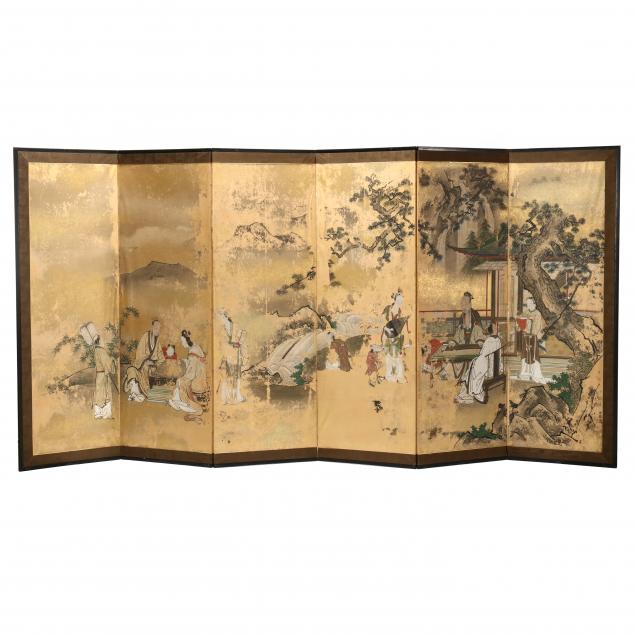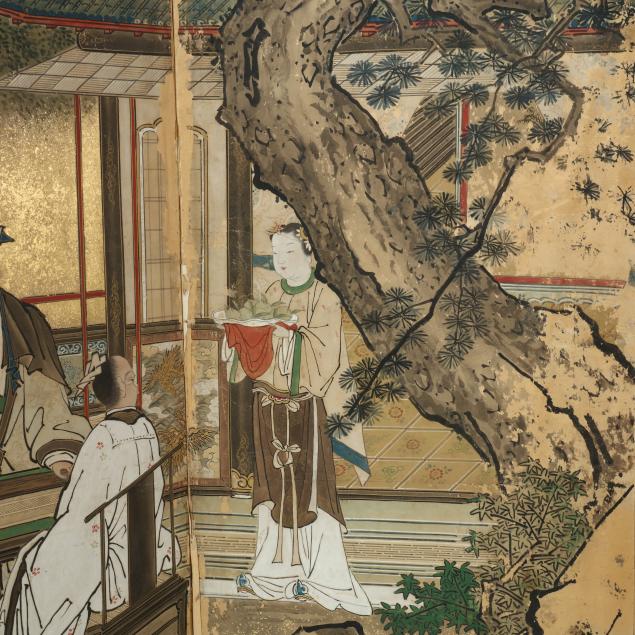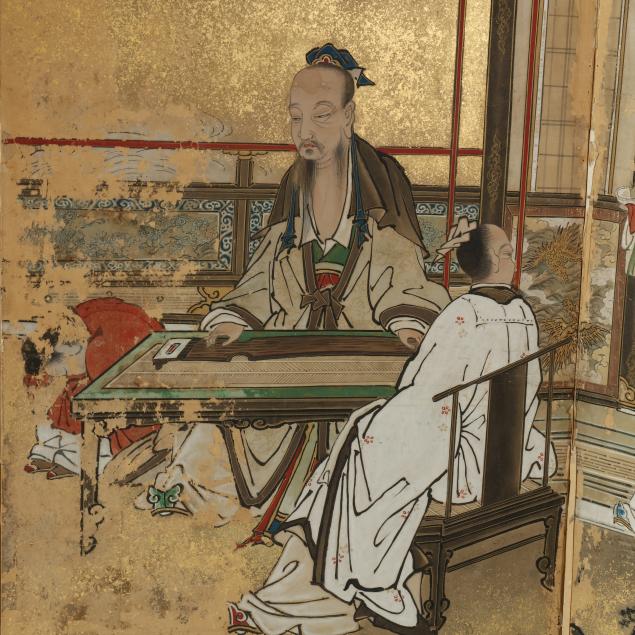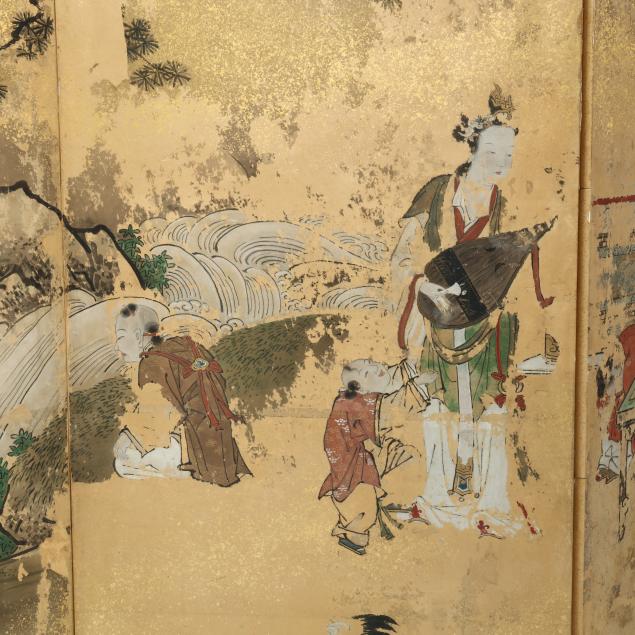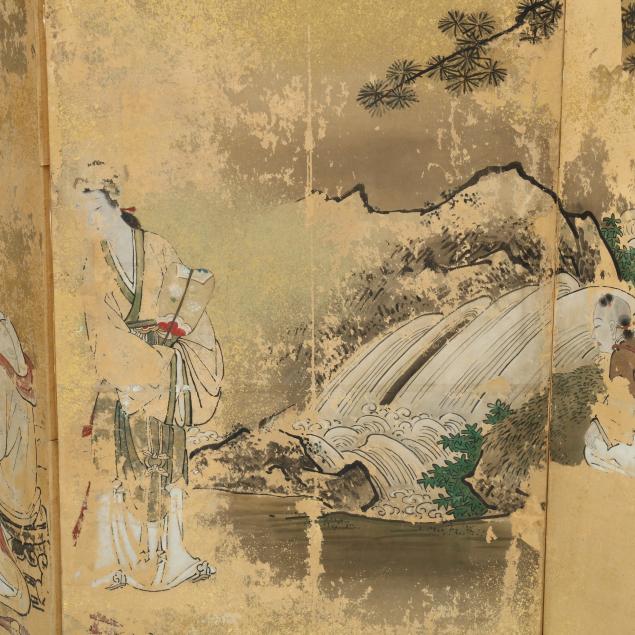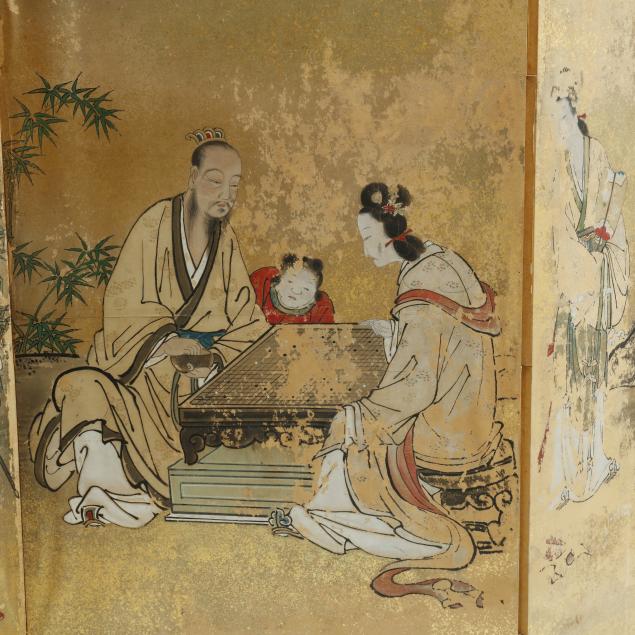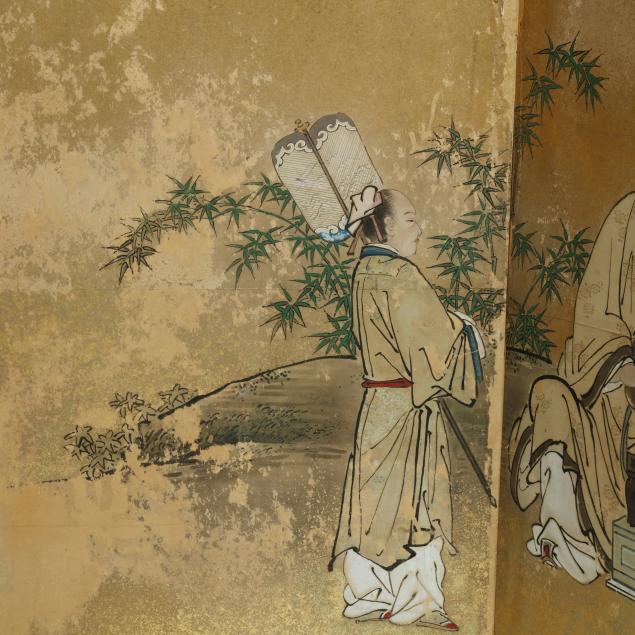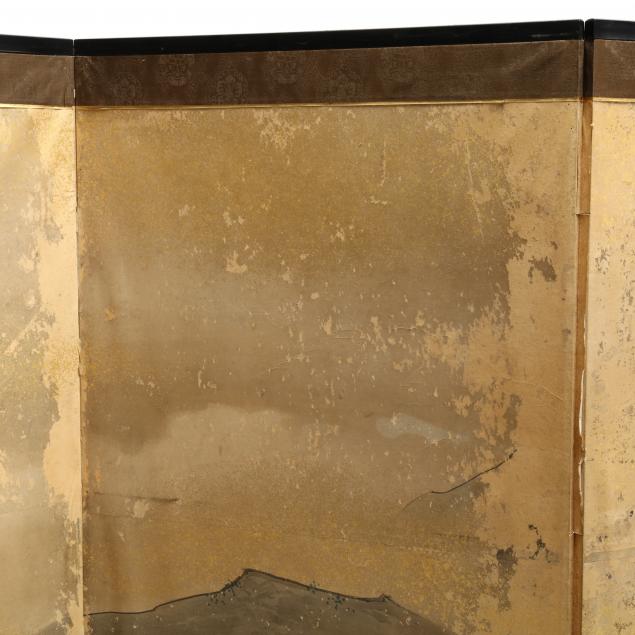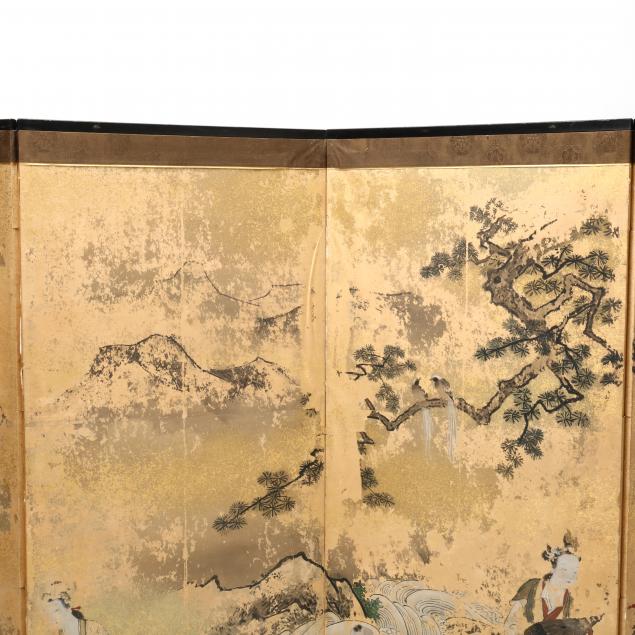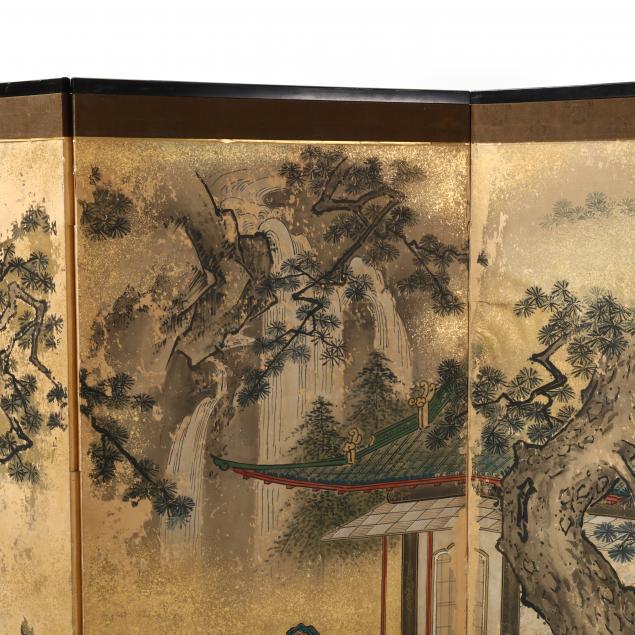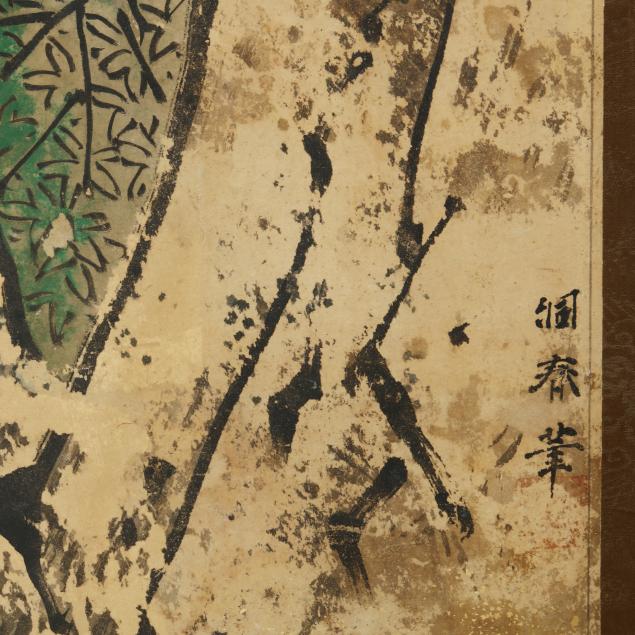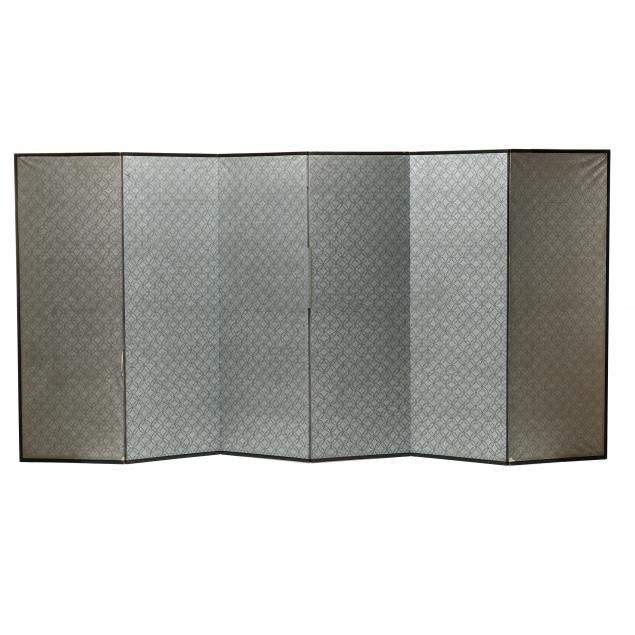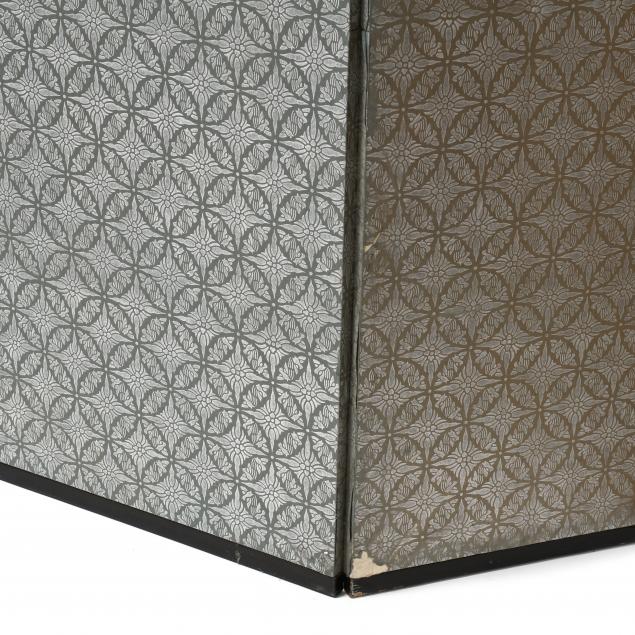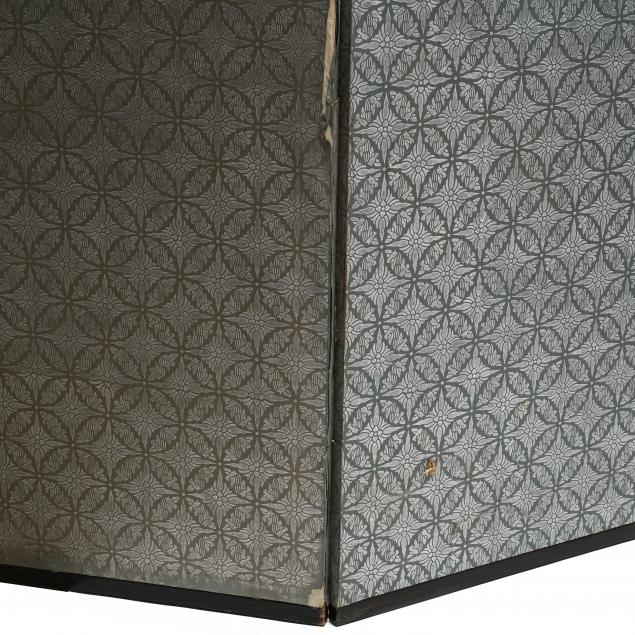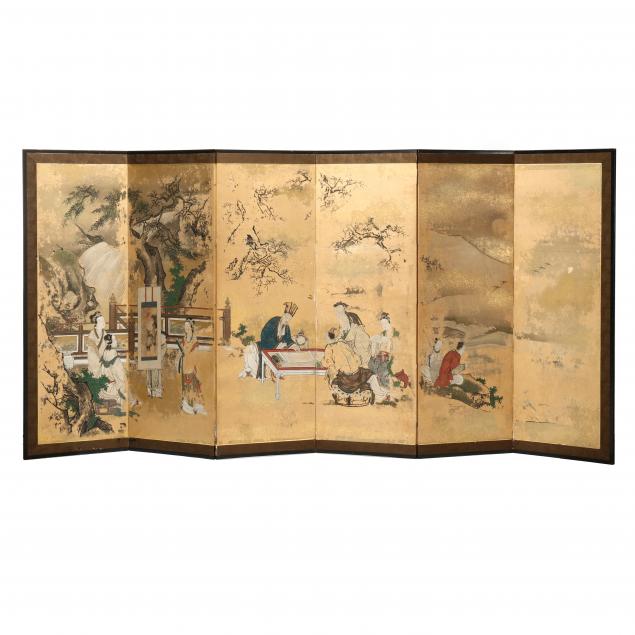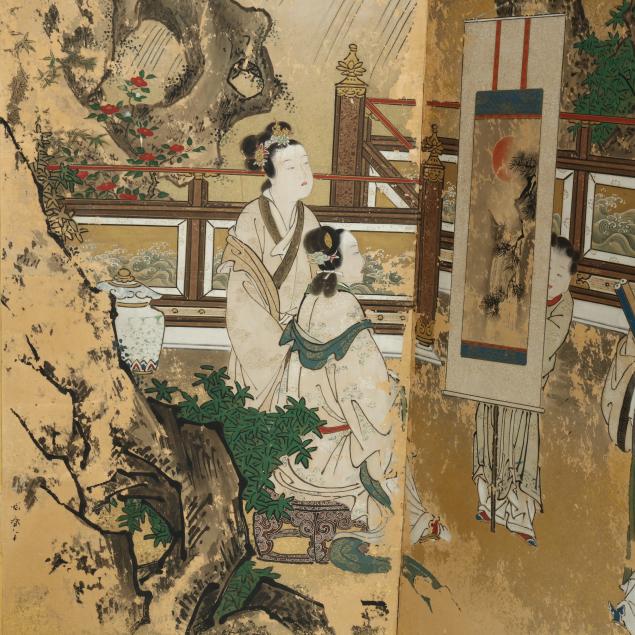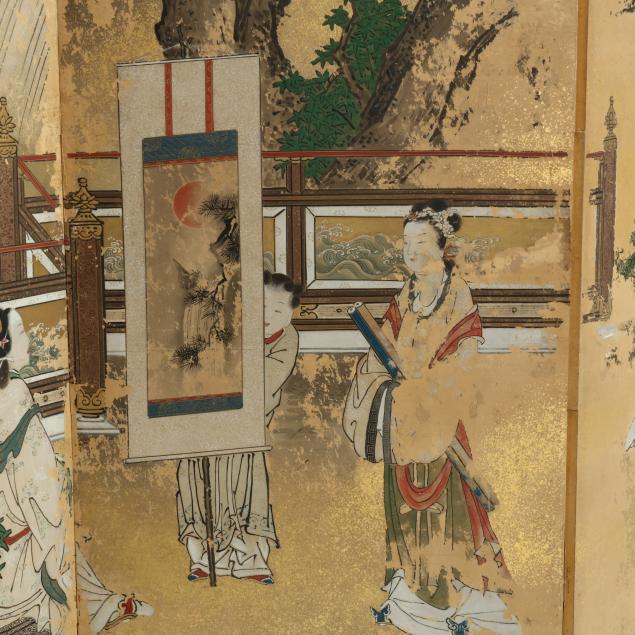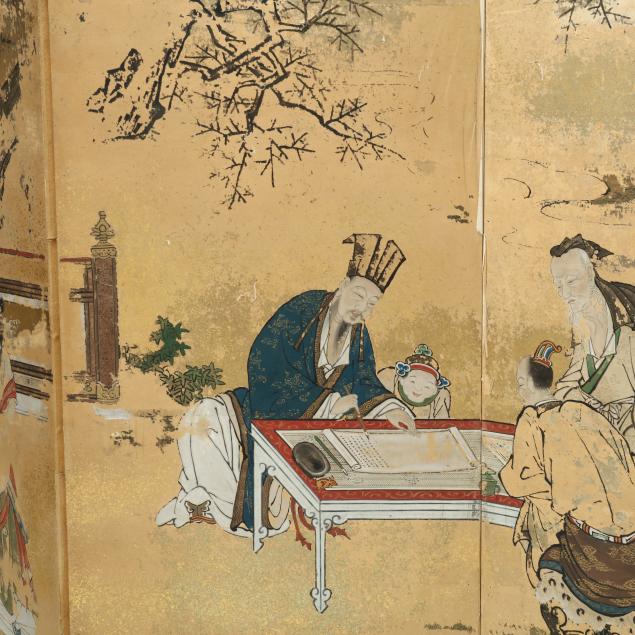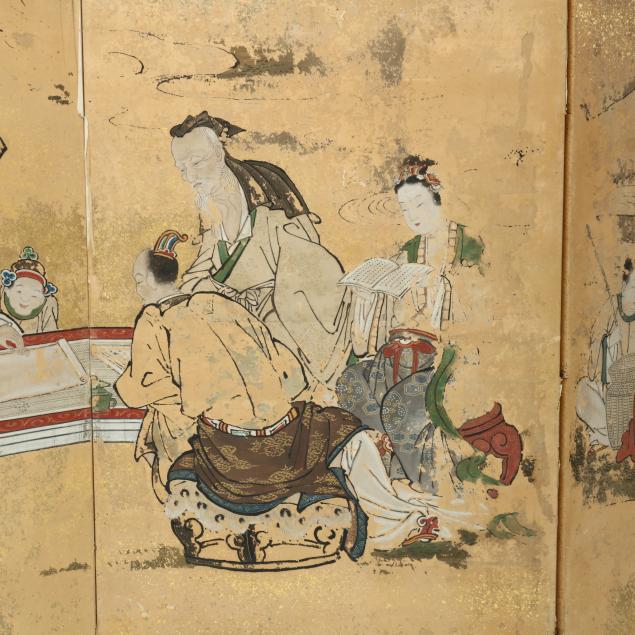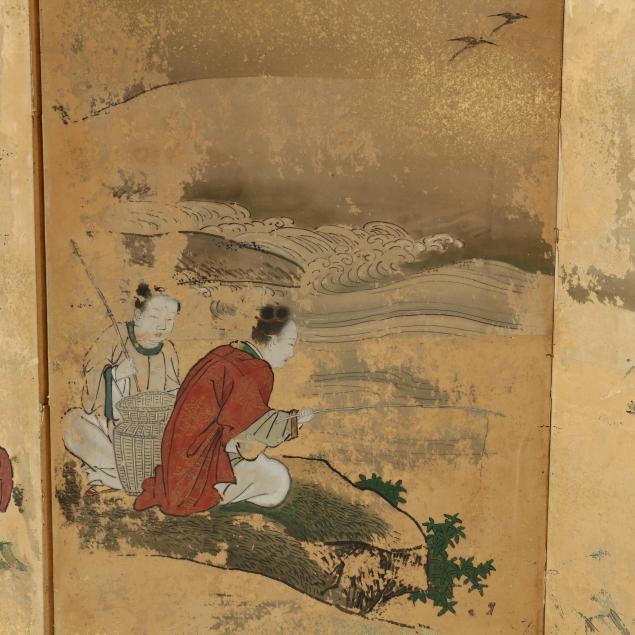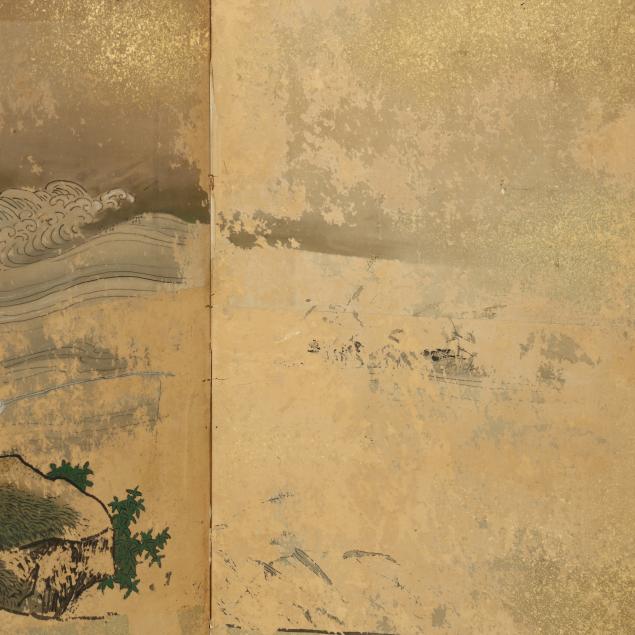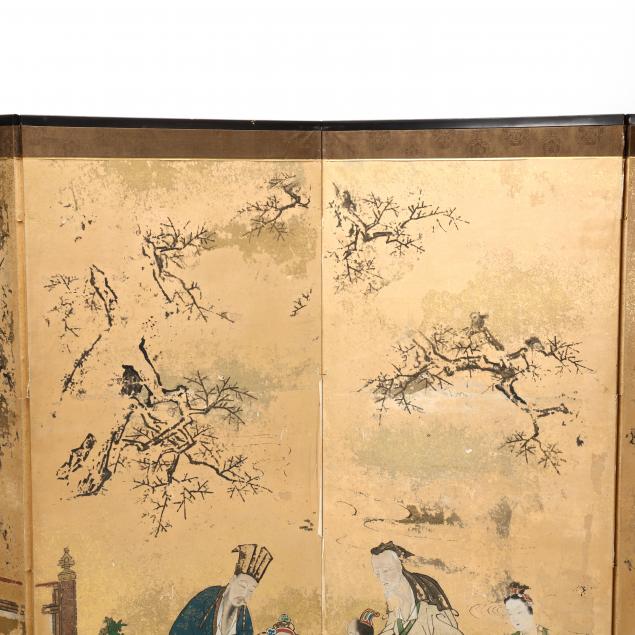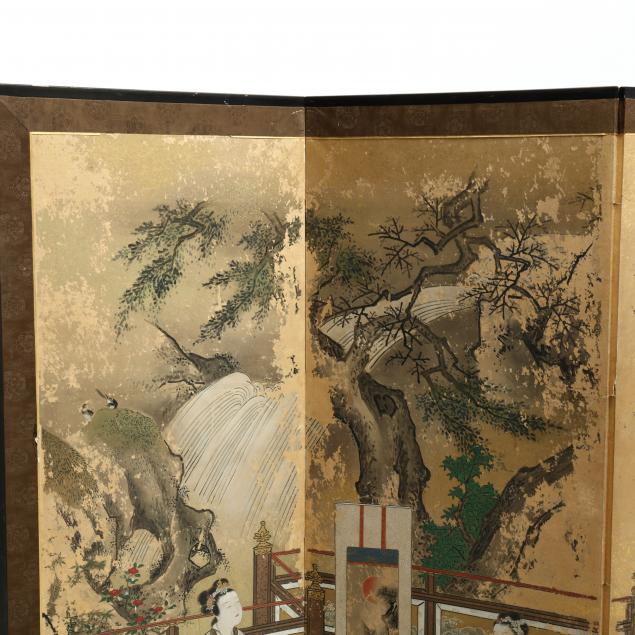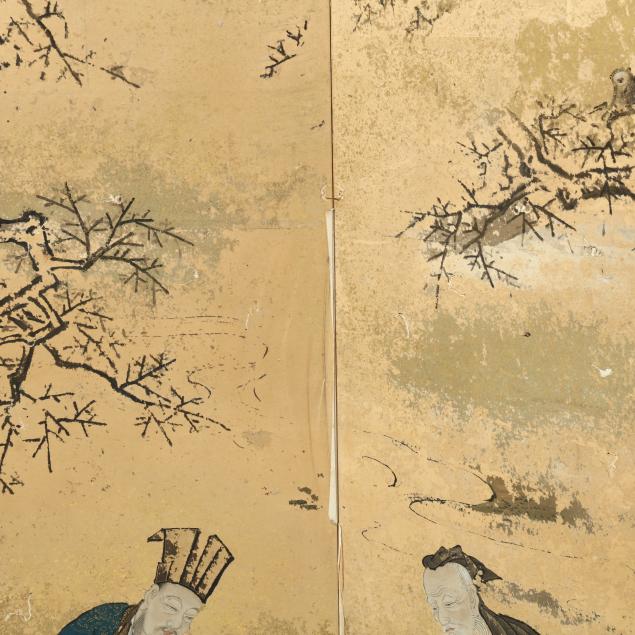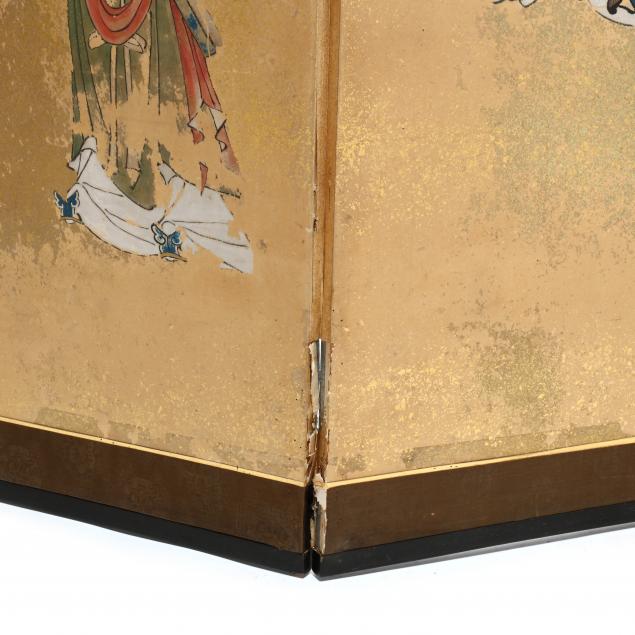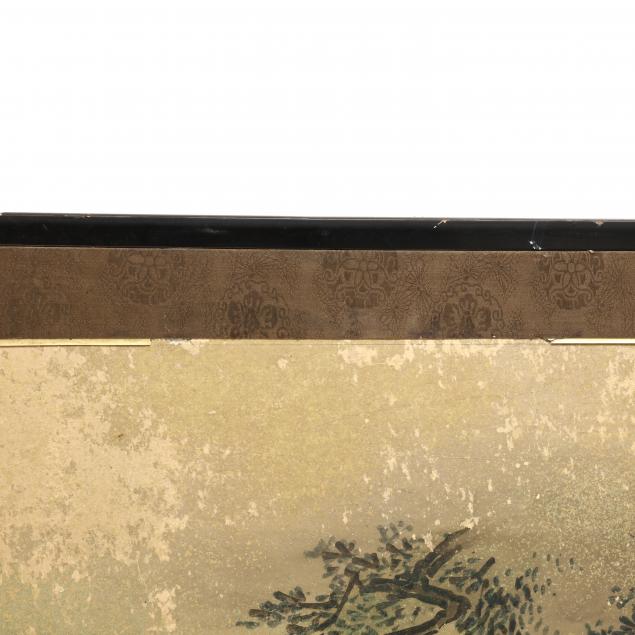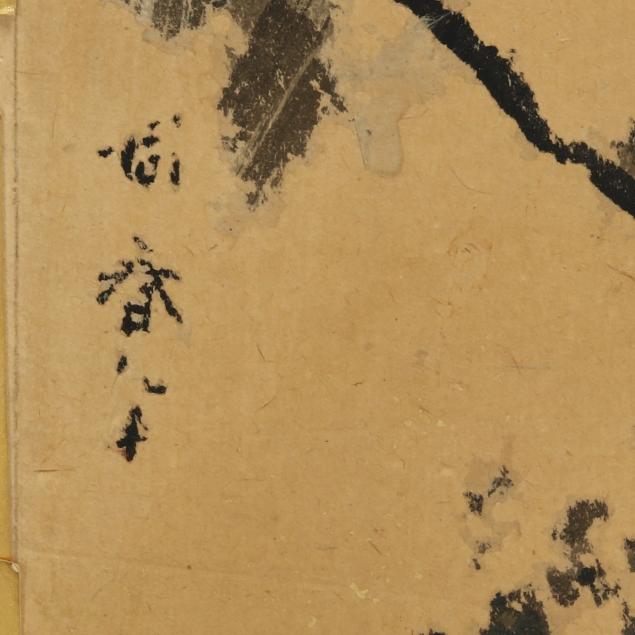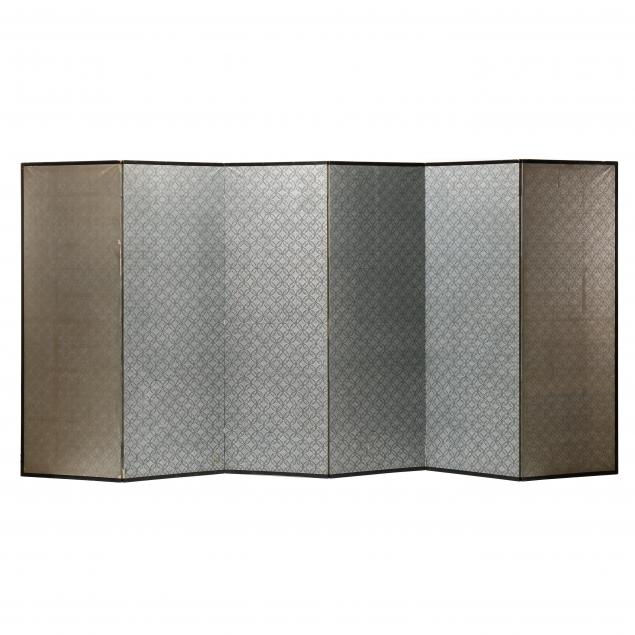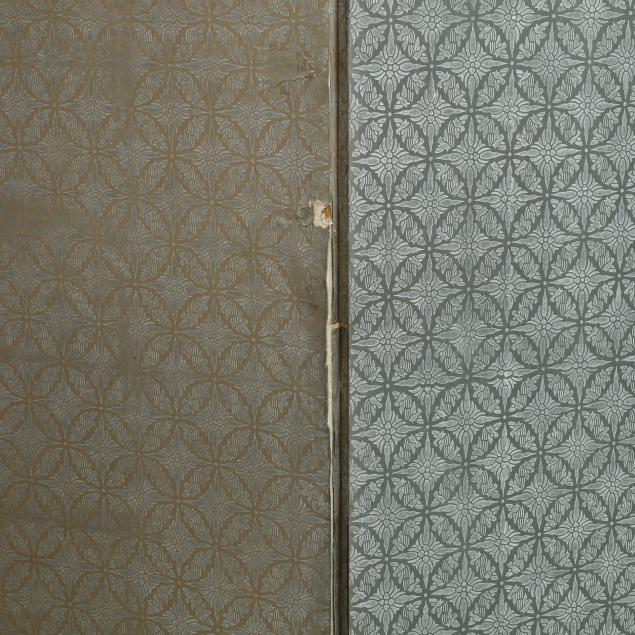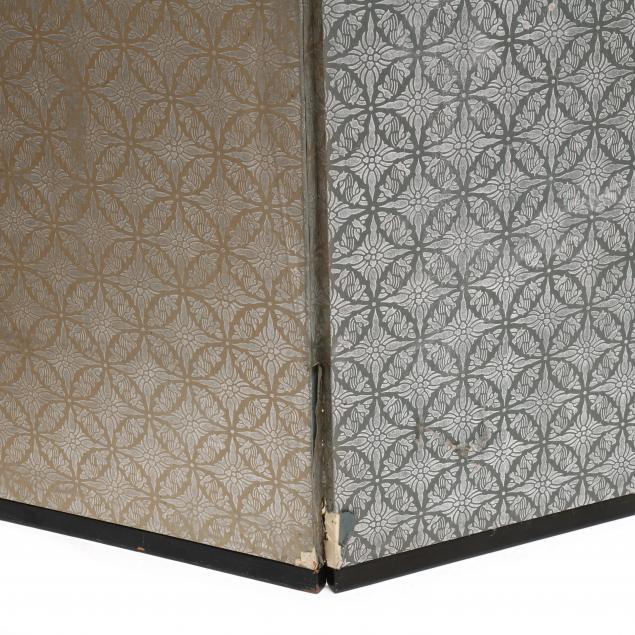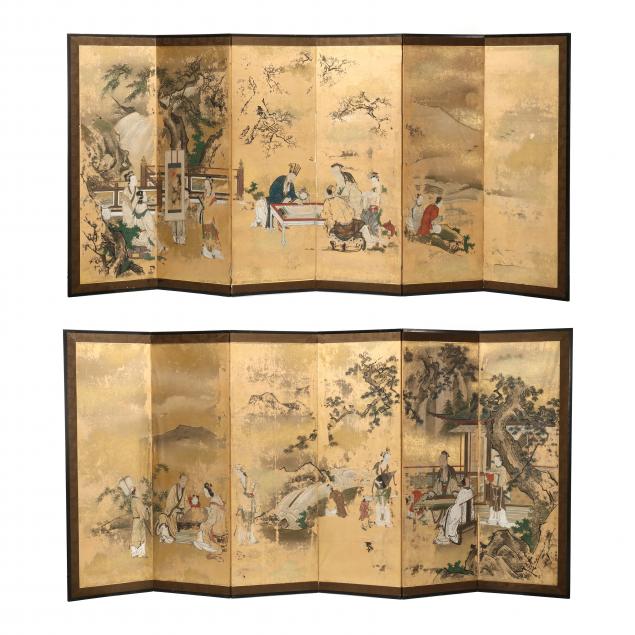
Lot 148
Kano Toshun 狩野洞春 (Japanese, 1747-1797), The Four Accomplishments
Explore more items like this one.
Visit our Asian Arts Department Asian Arts
Lot Details & Additional Photographs
68 1/2 x 142 in.
Toshun was the son of Kano Gensen (1689-1755) and studied under Kano Toshu (d. 1785). He later became the fourth-generation head of the Surugadai branch of the Kano School in Edo and was awarded the title Hogen. Toshun is also known for his work on the ceilings and walls of Rinnoji Temple and for his participation in the creation of screen paintings for the Korean King Jeongjo.
The Kano school of painting was originally characterized by a strong emphasis on skilled ink brushwork to depict popular Chinese subjects, but as the school evolved through the Momoyama and Edo periods, the artists and patrons began favoring these elements merged together with bright pigments and patterns associated with traditional Japanese decorative arts . This pair of screens by Toshun depicting the Chinese theme of The Four Accomplishments is a perfect expression of the Kano school style practiced during the Edo period.
Scattered losses over both screens; professional restoration to stablize the remaining pigments and gold over both screens probably occurred when last remounted; some looseness to paper at some of the middle edges; some panels with lifting and some minor loss to paper along folding edges; signature on second screen is probably from the last restoration.
$2,000 - 4,000
